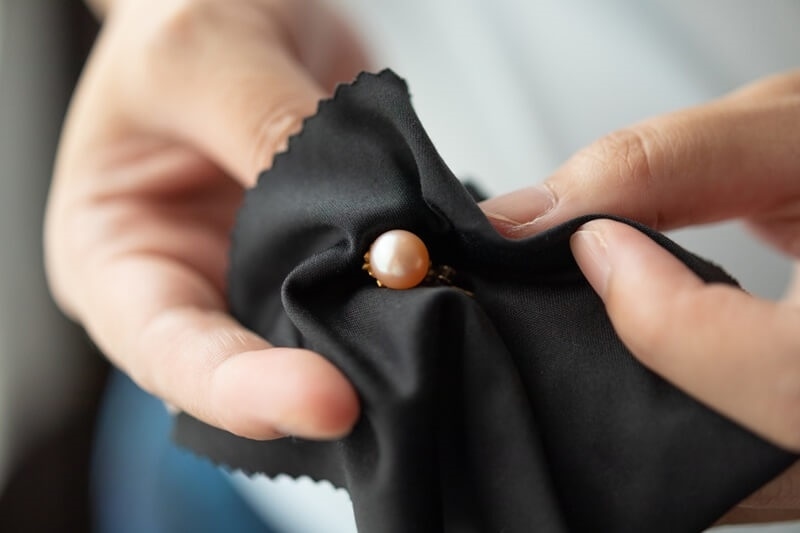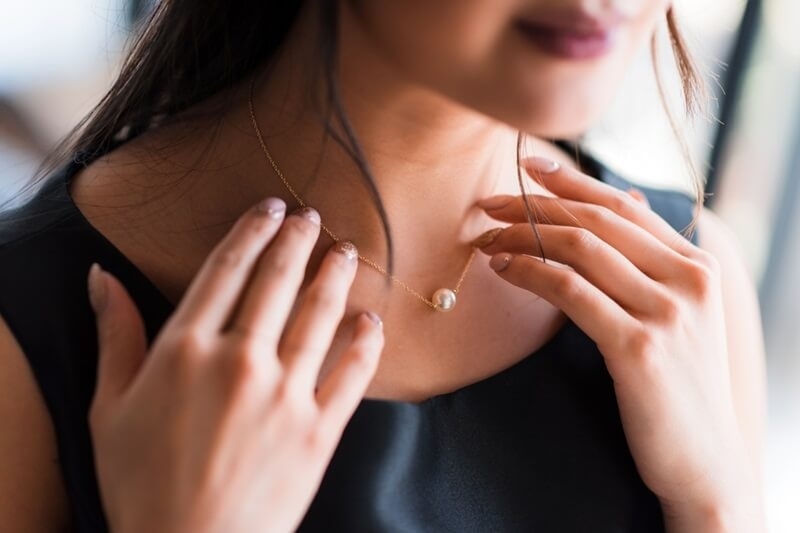
Pearls are classic, refined, and one of the most valuable gemstones globally. However, while pearls are as valuable as diamonds or sapphires, they are organic and fragile, which makes them more susceptible to damage over time. To maintain their natural beauty, each owner must employ the correct pearl jewelry care advice, particularly on how to store pearls and how to prevent yellowing pearls. From wearing practices daily to routine maintenance, this book gives you detailed guidance on how to keep your pearls glowing for years.
Pearls are formed by a living organism—mollusks and oysters. That they are formed by an organism makes them softer than other gemstones, ranking only 2.5 to 4.5 on the Mohs hardness scale. Being subject to harsh environments, chemicals, or improper storage can make them lose their luster, turn color, or even break.
Regardless of whether you have a basic strand of pearls or a show-stopping statement necklace, care ensures longevity. Adhering to critical pearl jewelry care guidelines avoids popular problems of fading, scratching, and brittleness.
Before moving on to doable steps, there is a need to comprehend what gives pearls their uniqueness. They consist of layers of nacre, a crystalline material that mollusks secrete. The nacre is the source of their shine, referred to also as "orient. "However, mother-of-pearl is delicate: dry weather, acid, and abrasives can erode it.
Pearls are organic and, like all living things, require special care. Thus, it is a necessity to take care of pearl jewelry if you want it to remain beautiful from generation to generation.

When you wear pearls every day, they will need more care.
Unlike diamonds that can survive near anything, pearls flourish when worn with care. Here are a few best practices:
But this should be balanced by gentle cleaning.
After wearing pearl jewelry every day, pearl jewelry care helps retain your necklace, bracelet, or earrings from losing their natural luster too soon.
Storing pearls properly is critical to their maintenance, and many pearls lose luster not because of wear and tear but because of improper storage. Knowing how to store pearls will help enhance their longevity:
Correct storage is perhaps the most underappreciated but essential pearl jewelry care advice.
Yellowing is a common complaint among pearl owners. As time passes, the color of pearls may shift from creamy white to a yellowed color, as a result of being dry, dirty, or having been exposed to chemicals in the environment. Here are some strategies you can use to avoid the yellowing of your pearls:
Following these habits, you can easily prevent yellowing pearls and keep them shining for years.
Chemicals pose the greatest danger to pearls. Household items carry chemicals that deteriorate nacre, such as:
When it comes to pearls vs chemical exposure, the guideline is straightforward: separate pearls from cosmetics and household cleansers. This renders it necessary to apply beauty products first and remove pearls before applying household cleaners.
Most individuals mistake pearl cleaning with other jewelry, with ultrasonic cleaning or harsh soaps. This destroys pearls irreversibly. The Proper Technique:
These methods are in line with the safest pearl jewelry care recommendations.
Pearl necklaces are strung on weak silk that gives over time, which is why it is important to know how often to restring the pearl necklace you own.
Keeping track of how often to restring a pearl necklace will ensure your pearls are safe and minimize accidental damage.
While taking care of pearls on a day-to-day basis and proper storage are important, a professional service offers extra coverage. Jewelers can:
Even a trip to a jeweler every few years will benefit the condition of your pearls.
Despite best efforts, pearl owners inadvertently damage their jewelry. The following are pearls to avoid:
Steering clear of these errors is as crucial as adhering to pearl jewelry care advice.
Pearls are gems that should last a lifetime, but only if properly cared for. From understanding the proper way to store pearls, to preventing yellowing pearls, to learning about daily wear pearl jewelry care, your diligence will keep their natural luster.
Similarly, paying attention to pearls vs chemical exposure and understanding how frequently to restring a pearl necklace makes sure your pearls are as lovely as the day you first purchased them. With these tried-and-true tips, your pearls will shine brightly with ageless beauty for generations.
This content was created by AI